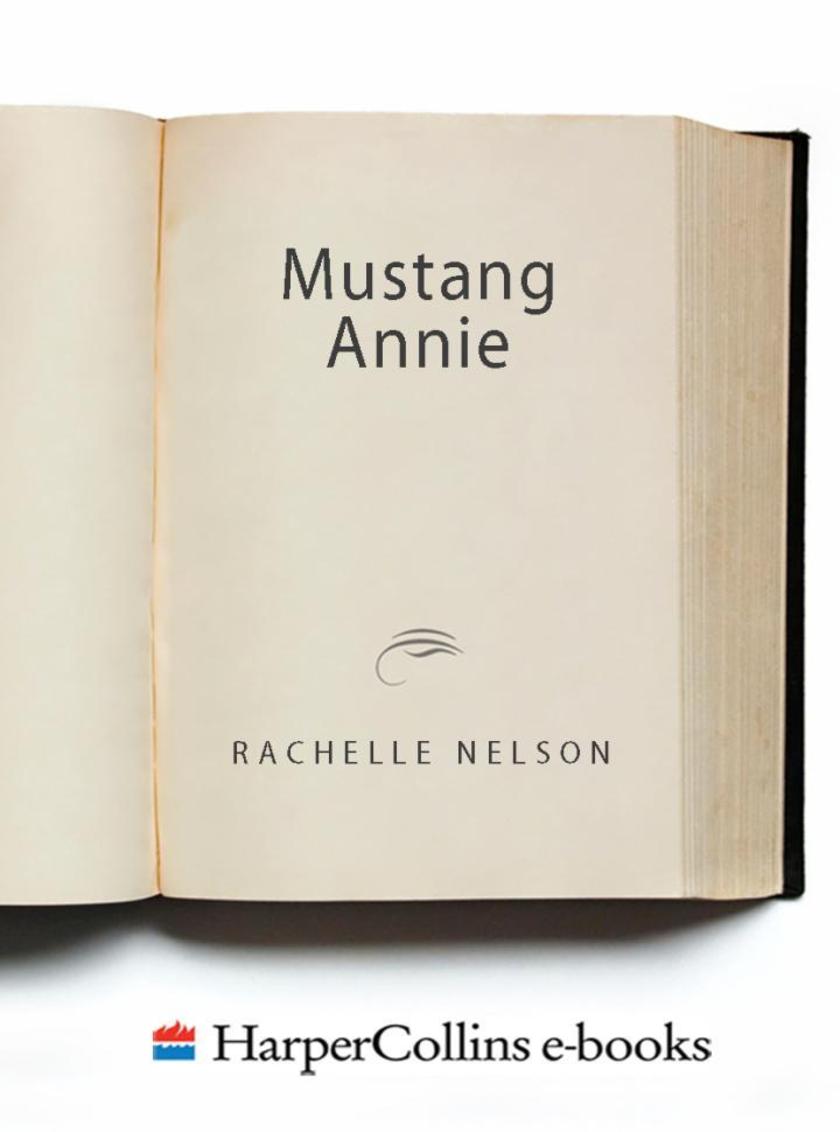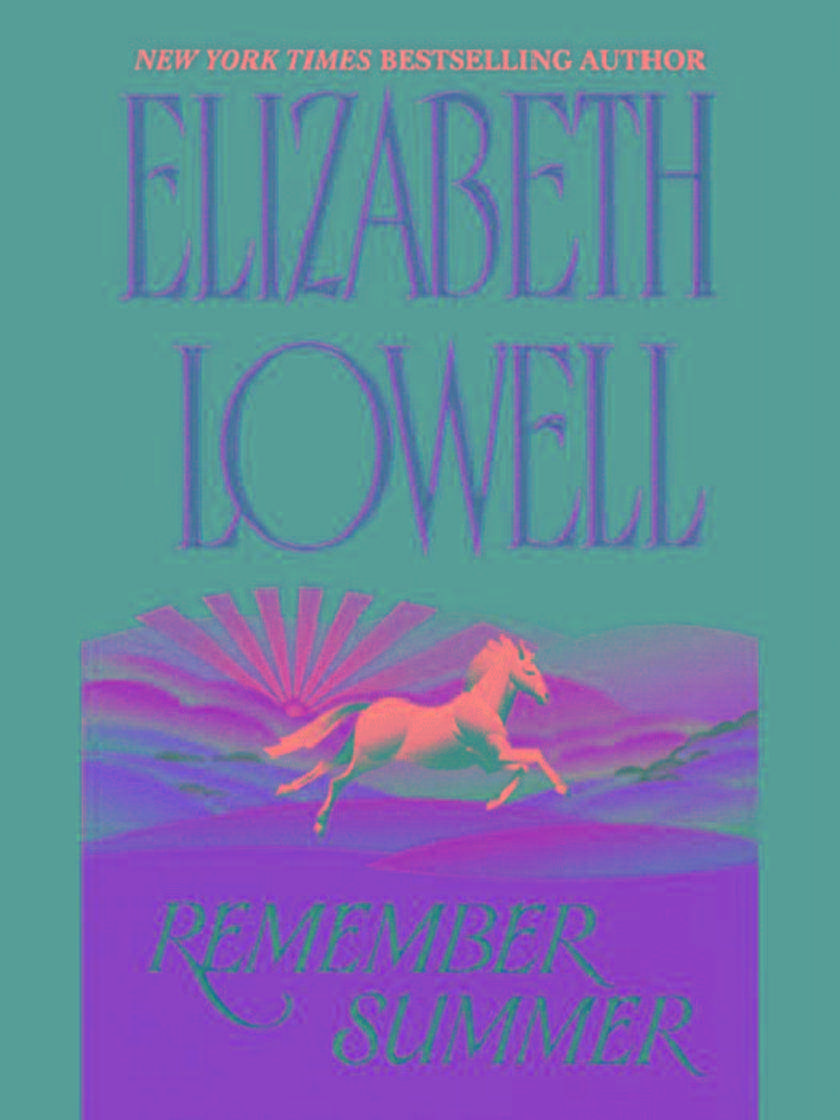
Half Moon Hill
¥42.03
You never know what destiny has in store . . .A rugged loner and ex-biker-gang member, Duke Dawson is looking for some peace and quiet while recovering from an accident. But when Anna Romo comes wandering through his woods and into his cabin, she completely rocks his world. The last thing he expected or wanted was to find himself hungering after a woman whose eyes held hurt even deeper than his own . . .Running from a troubled past, Anna is building a new life in Destiny. When she first meets Duke, she's terrified but something about him calls to her very soul. The hard-bodied rebel is soon helping her turn her new home into a bed and breakfast, and close quarters quickly lead them into her bed. Their passion is palpable, but can she convince a man who has turned his back on life to take the biggest leap of faith of all and fall in love?

A Promise at Bluebell Hill
¥42.03
Welcome to Valentine Valley, where romance blooms and love captivates even the most guarded of hearts . . . From the moment Secret Service agent Travis Beaumont strides into the town and through the door of Monica Shaw's flower shop, she feels a sizzle of attraction. After years of putting everyone else's needs first, Monica is ready to grab hold of life. If she can just persuade the ultimate protector to let his own walls down for once . . . The President's son is getting married in Valentine Valley, and Travis should be avoiding all distractions . . . not fantasizing about a forthright, sexy-as-hell florist. Especially when she's keeping secrets that could jeopardize his assignment. But just this once, Travis is tempted to put down the rulebook and follow his heart—right to Monica's door. Roses are red, violets are blue, and in Valentine Valley, love will always find you.

It Takes a Scandal
¥41.91
Sometimes It Takes a Scandal . . .Abigail Weston has everything: beauty, wit, and one of the largest dowries in England. Her parents hope she'll wed an earl. Abigail hopes for a man who wants her desperately and passionately. But the money seems to blind every man she meets except one.Sebastian Vane has nothing. He came home from war with a shattered leg to find his father mad and his inheritance gone. He's not a fit suitor for anyone, let alone an heiress. But Abigail lights up his world like a comet, bright and beautiful and able to see him instead of his ruined reputation. And it might end happily ever after . . .To Reveal Your Heart's Desire. . . Until Benedict Lennox begins courting Abigail. Ben is everything Sebastian isn't wealthy, charming, heir to an earl. Sebastian won't give up the only girl he's ever loved without a fight, but Abigail must choose between the penniless gentleman who moves her heart, and the suitor who is everything her parents want.

Mustang Annie
¥42.03
Wild at HeartAfter Annie Harper's world shattered four years ago, taming horses became her salvation. But when Brett Corrigan hires her to capture the wild mustang that's stealing his mares, Annie's passion is ignited by the masterful rancher, sweeping through her like wildfire. Brett never expected the legendary Annie to be a beautiful woman with a boldness that arouses his desire as much as it does his temper or a hidden vulnerability he's helpless to resist. But he's wagered his lifetime dreams on the ranch he won with a turn of the card, and he's not about to let this troublesome craving get in his way. As they track the rogue stallion across the Texas badlands, battling the forces of man, nature, and their own stubbornness, will Annie trust Brett with her heart and will Brett decide that Mustang Annie is worth the greatest gamble of all?

Loving Linsey
¥21.73
The signs have mistakenly told superstitious Linsey Gordon that she has less than three months to live, and she's determined to do one last good deed before she dies. But matchmaking for her timid sister Addie is going to take doing, when the man Linsey has in mind for Addie ends up falling for her! She'll have to stop trusting in signs, and believe in something much stronger than luck: passionate, unpredictable love.

Perfect Match
¥42.48
While Not Looking For Mr. Right... Although she vows that she's locked her heart and thrown away the key, ravishing red-headed Lauren Stevens suddenly has several men vying to prove her wrong—and to win the right to set free her passionate self. Button-down banker Oliver Gotho seems like a good candidate, but it's Oliver's sexy brother Alistair who has invited the beautiful, penniless free spirit to share his living space—temporarily, of course. She thinks she should encourage the successful businessman brother, yet is it Alistair with the oh-so-sensual magic touch who holds the key to her happinessHas She Found Her Perfect MatchSexy, wise, and charismatic, Alistair has offered Lauren a place to stay out of the goodness of his heart—and certainly not because of her gorgeous eyes, luscious lips and enchanting body. Lauren may entrance him, but it's time for him to find a sensible woman to take to wife. And Lauren, with her penchant for peccadilloes, spells nothing but trouble. But spring is in the balmy New Orleans air, and so is love, as both Lauren and Alistair discover that the heart-pounding perfect match isn't always the one knocking at the door...

The Seduction of an Unknown Lady
¥48.39
Seduction is something Fionna Hawkes knows nothing about. So when she encounters a sexy stranger on a moonlit street, her first instinct is to defend herself against her darkly handsome suitor. But letting go of suspicion and allowing herself to fall for Lord Aidan McBride brings even greater danger. In his eyes, she glimpses a powerful passion she longs to fulfill. In his arms, she aches with the secret she longs to unburden. A secret that could cost her her livelihood and her life.Aidan could never resist a mystery, especially one as mesmerizing as the lovely Miss Hawkes! Drawing her into the shelter of his embrace, he won't rest until he convinces her to reveal everything. Braving the danger that stalks Fionna at every turn, Aidan is determined to defend her and just as determined to claim her as his own.

In Bed With the Devil
¥48.39
They call him the Devil Earl a scoundrel and accused murderer who grew up on the violent London streets. A proper young lady risks more than her reputation when consorting with the roguishly handsome Lucian Langdon, but Lady Catherine Mabry believes she has no choice. To protect those she loves, she would do anything even strike a bargain with the devil himself.Lucian desires respectability and a wife above all else, but the woman of his choosing lacks the social graces to be accepted by the aristocracy. Catherine can help Lucian gain everything he wants. But what she asks for in exchange will put their very lives in jeopardy. When danger closes in, Catherine discovers a man of immense passion and he discovers a woman of immeasurable courage. As secrets from his dark past are revealed, Lucian begins to question everything he knows to be true, including the yearnings of his own heart.

Reckless
¥56.07
Independent, stunning, and smart, Kell Jameson has the life she's always dreamed about. A partner at a tony Atlanta law firm that represents famous if guilty clients, she's far from her days as a lonely orphan in rural Georgia. But one frantic phone call will bring her back to the place she's spent years trying to escape. The head of her childhood orphanage has been accused of murder, and Kell is her only hope for freedom. From the first moment Kell meets Sheriff Luke Calder, tempers and attraction flare. Ruggedly handsome and a stickler for law and order, Luke finds Kell compelling. Unfortunately, she represents his prime suspect. Forced to work together, they dig deep into the town's scandals . . . but Kell has a secret of her own. She trusts Luke enough to fall in love but does she trust him enough to reveal the reckless past she's worked so hard to keep hidden?

The Complete Guide to Vitamins, Herbs, and Supplements
¥49.05
The Natural Way to WellnessFind essential information on hundreds of vitamins, herbs, and supplements -- What will VITAMIN E help cure and how much should I takeVitamin E can help prevent heart disease and treat acne. Adults should take 100 to 400 IU of natural vitamin E daily. Find vitamin, herb, and supplement treatments for hundreds of conditions!Experiencing migrainesSee MAGNESIUM:There is considerable evidence that low magnesiumlevels trigger both migraine and tension headaches. Take250 to 400 milligrams three times daily.Learn about possible interactionswith your pre*ion drugs! Taking ST. JOHN'S WORT for depression?It may interfere with amphetamines, diet pills, nasaldecongestants, or allergy medications, causingnausea or high blood pressure.Here is your comprehensive, portable, one-step guide to all over-thecounter vitamins, herbs, and supplements currently available -- an easy-to-use alphabetical listing that includes valuable information on the most effective forms of each supplement, the nutrient's food source and proper dosage, as well as signs of deficiency, safe use, and possible side effects.

First Lady
¥55.31
How does the most famous woman in the world hide in plain sightThe beautiful young widow of the President of the United States thought she was free of the White House, but circumstances have forced her back into the role of First Lady. Not for long, however, because she's made up her mind to escape -- if only for a few days -- so she can live the life of an ordinary person. All she needs is the perfect disguise . . . and she's just found it.An entire nation is searching for her, but the First Lady is in the last place anybody would think to look: in the company of a man, an infuriatingly secretive and quietly seductive stranger whose charm, good looks, and sensuous appeal are awakening the forgotten woman within the dignitary. And with two adorable little orphaned girls in need of a family along for the ride, they're heading out across the heartland chasing their own American Dream -- on a wild journey of love, adventure, and glorious rebirth.First Lady: A star-spangled, richly emotional story of self-discovery, celebrity, love, and family.

Let It Be Love
¥56.07
When New York Times bestselling author Victoria Alexander created the Effingtons, she introduced an irresistible clan. Now, meet her most unforgettable hero yet . . .Dashing Jonathon Effington, the Marquess of Helmsley, has had more than one lady willingly fall into his arms. But he's so delicious none has ever complained at their inevitable parting. And while Jonathon's no stranger to passion of the flesh, his heart has remained untouched. Until now . . .At each Christmas Ball, Jonathon selects a delectable lady to share the pleasures of the evening after all, it's a holiday tradition! But he is shocked to discover that his choice is replaced by an enchanting stranger who surprises him with a proposal of marriage. Beautiful Fiona Fairchild is desperate only a wedding will save her sisters and her inheritance. But Jonathon has no interest in marriage, and what starts as a shocking proposal turns into a scandalous proposition that might ruin them both . . .

Kiss Me, Annabel
¥55.91
The rules of marriage . . . according to Miss Annabel Essex A husband must be:Rich.Make that very rich. She's had enough of leaky roofs and thread-worn clothing.English.London is the center of the civilized world, and Annabel has a passion for silk and hot water.Amiable.Good-looking would be nice, but not necessary. Same for intelligent.Isn't she luckyShe's found just the man! And her chosen spouse is nothing like the impoverished Scottish Earl of Ardmore, who has nothing but his gorgeous eyes, his brain and his kisses to recommend him.So what cruel twist of fate put her in a carriage on her way to Scotland with just that impoverished earl and all the world thinking they're man and wifeSleeping in the same bedNot to mention the game of words started by the earl in which the prize is a kiss. And the forfeit . . . Well. They are almost married, after all!

A Visit From Sir Nicholas
¥56.07
Everyone knows that an Effington always getsher way ... but this time it's not going to be easy!Lady Elizabeth Effington simply could not suitably feel the joy of the Christmas season. Ten years had passed since she had boldly declared her love for Sir Nicholas Collingsworth. He rebuffed her and set out to seek his fortunes, while Elizabeth was left a woman scorned. Now, she discovers in horror that the inheritance she's managed beautifully was never hers to control. No, power over her finances lay in the hands of the last man she ever wants to see again: Nicholas!But running Elizabeth's life isn't part of Nick's plans. He's intrigued when he discovers that the frivolous and flighty girl he once knew has turned into a beautiful and capable woman. Nick vows to woo -- and win -- her, and while she seems unmoved by his fervent seduction, he swears he will not rest until she accepts that most precious gift of all -- the gift of love.

Remember Summer
¥55.31
The most grueling challenge of Raine Smith's equestrian career looms before her the Olympic Games. Little does she realize that she's about to face greater perils in the arms of a stranger than she's ever found on the back of her horse.Cord Elliot is a man trained to deflect disaster and his mission is to ensure that Raine Smith remains untouched by sudden gunfire at the Summer Games. Yet from the moment Raine Meets Cord's ice-blue glance, she knows he's more hazardous to her heart than a sniper's bullet. Falling for a man who answers to the call of intrigue and holds secrets that can never be shared is to endure the broken promises, unexplained absences, and constant danger that come with his profession. But in the fiery passion of irresistible love, a summer to remember seems worth any risk.

Anatomy of a Misfit
¥55.33
In this Mean Girls meets The Perks of Being a Wallflower tale, narrator Anika Dragomir is the third most popular girl at Pound High School. But inside, she knows she's a freak; she can't stop thinking about former loner Logan McDonough, who showed up on the first day of tenth grade hotter, bolder, and more mysterious than ever. Logan is fascinating, troubled and off-limits. The Pound High queen bee will make Anika's life hell if she's seen with him. So Anika must choose ignore her feelings and keep her social statusOr follow her heart and risk becoming a pariah. Which will she pickAnd what will she think of her choice when an unimaginable tragedy strikes, changing her foreverAn absolutely original new voice in YA in a story that will start important conversations and tear at your heart.

The Clockwork Crown
¥84.16
Narrowly surviving assassination and capture, Octavia Leander, a powerful magical healer, is on the run with handsome Alonzo Garrett, the Clockwork Dagger who forfeited his career with the Queens secret society of spies and killers and possibly his life to save her. Now, they are on a dangerous quest to fnd safety and answers: Why is Octavia so powerfulWhy does she seem to be undergoing a transformation unlike any witnessed for hundreds of years?The truth may rest with the source of her mysterious healing power the Lady's Tree. But the tree lies somewhere in an inhospitable territory known as the Waste. Eons ago, this land was made barren by an evil spell, until a few hardy souls dared to return over the last century. For years, the Waste has waged a bloody battle against the royal court to win its independence and they need Octavia's powers to succeed.Joined by unlikely allies, including a menagerie of gremlin companions, she must evade killers on a dangerous journey through a world on the brink of deadly civil war.

The Leveller
¥55.33
Nixy Bauer, Home in an Hour Nixy Bauer is used to her classmates being very, very unhappy to see her. After all, she's working with the enemy she's on their parents payrolls.Nixy is a bounty hunter in a virtual-reality gaming world. Kids in the MEEP, as they call it, play entirely with their minds, while their bodies languish in a sleeplike state on the couch. Irritated parents, looking to wrench their kids back to reality, hire Nixy to jump into the game and retrieve them. Luckily for Nixy and her wallet, she's the best leveller out there.But when the game's billionaire developer and Nixy's parents boss loses track of his own son in the MEEP, Nixy is in for the biggest challenge of her bounty-hunting career. Wyn Salvador isn't some lazy kid looking to escape his homework, and this is no ordinary levelling job: Wyn does not want to be found. And he's left behind a suicide note.Nixy takes the job but quickly discovers that Wyns not hiding he's being held inside the game against his will. But who is holding him captive, and why?Nixy and Wyn attempt to fight their way out of a mind game unlike any they've encountered. And the battle brings them closer than either could have imagined. But when the whole world is virtual, how can Nixy possibly know what's real?

Judgment
¥66.50
Carey Baldwin, author of the thrilling novel Confession, returns with a new story featuring two of her most beloved characters. Fans of Tess Gerritsen and Lisa Gardner will devour this riveting story of rivals caught in a killer's twisted web.When a coed falls prey to a sadistic murderer, forensic psychiatrist Dr. Caitlin "Caity" Cassidy and Special Agent Atticus Spenser are called in to testify—one for the defense, one for the prosecution. With warring approaches to justice, these two rivals have been butting heads for years—both inside the courtroom and out. And at first, this case appears to be no different.But when a brutal attack leaves the accused man dead and Caity in critical condition, petty differences take a backseat to saving lives. As the lone survivor, Caity knows too much, and the killer—a madman calling himself the Man in the Maze—is coming back for round two. Now Caity and Spense must join forces to uncover the killer's identity before Caity's time—and luck—runs out.

So Big
¥90.77
Winner of the Pulitzer Prize and widely considered to be Edna Ferber's greatest achievement, So Big is a classic novel of turn-of-the-century Chicago. It is the unforgettable story of Selina Peake DeJong, a gambler's daughter, and her struggles to stay afloat and maintain her dignity and her sanity in the face of marriage, widowhood, and single parenthood. A brilliant literary masterwork from one of the twentieth century's most accomplished and admired writers, the remarkable So Big still resonates with its unflinching view of poverty, sexism, and the drive for success.

Pressure Perfect
¥149.48
Under pressure to get a tasty, nutritious dinner on the table in a flashLike the idea of preparing fork-tender beef stew in thirty minutes and pot roast in under an hourAll this and more is made possible by the pressure cooker, a magical appliance that produces soul-satisfying, homemade food in one-third (or less) the standard cooking time.In Pressure Perfect, Lorna Sass, the country's leading authority on pressure cooking, distills her two decades of experience into one comprehensive volume. First learn everything you need to know about buying and using today's 100% safe cookers. Then enjoy?more than?200 recipes for preparing soups, meats, poultry, grains, beans, vegetables, and desserts in record time. How about whipping up a savory risotto in 4 minutes, chicken cacciatore in 12 minutes, or a delectable chocolate cheesecake in 25 minutes?Because the pressure cooker tenderizes tough cuts of meat quickly, you can prepare fall-off-the-bone beef short ribs or lamb shanks on weekday nights instead of waiting for a special occasion. The pressure cooker also allows you to make delectable one-pot meals in minutes. Among the many innovative recipes and techniques, you'll learn to cook meatloaf and potatoes simultaneously in 10 minutes, and meatballs, pasta, and sauce at the same time in only 5 minutes. Many recipes also suggest Cook-Along ideas for preparing vegetables and grains along with the entrée.To further?help?those cooking under pressure (and who isn't nowadays?), each chapter contains timing charts for quick reference. Tips and Pressure Points in every recipe ensure optimum results.This ultimate guide to pressure cooking is a must for all busy cooks, boaters, brides, college students, and anyone looking for a great way to make irresistible, healthy, home-made food fast.




 购物车
购物车 个人中心
个人中心



